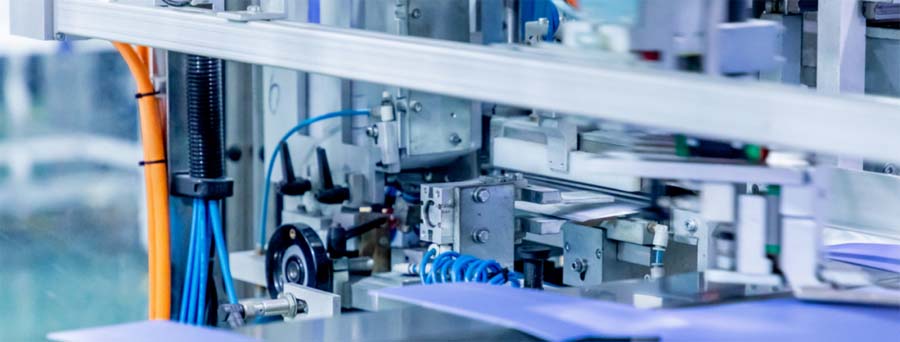CNC (Computer Numerical Control) machining is a manufacturing process that uses computer-controlled machines to manufacture precision parts from raw materials. CNC machining is widely used in industries such as aerospace, automotive, and medical, where accuracy and quality are crucial.
Processing high-precision and high-quality components incurs higher prices in terms of delivery time and financial costs. One of the main constraints of CNC machining is delivery time, which is the time required to receive finished products. A long delivery cycle can be frustrating and costly, so shortening the delivery cycle is crucial.
Design plays a pivotal role in influencing CNC machining lead times. Here are some design tips to help minimize CNC lead times:
Simplify Design:
Simplifying design by minimizing the number of operations required to produce parts can help reduce CNC delivery cycles – complex designs with complex functions typically require multiple operations and settings, which increases delivery cycles.
Standardize Tooling and Material
The design of standard tools and materials can help shorten delivery cycles by reducing the time required for tool replacement and material procurement or processing.
Standard tools are readily available, making the life of a mechanic easier.
Similarly, standard materials can be easily procured, which reduces material processing time and overall delivery cycle. Ordinary materials reduce delivery cycles because they are easier to procure and store, while ordinary materials may be easier to process, thereby reducing processing time.
A field that is easy to standardize is to specify only standard threads. Customized threads are rarely necessary, manufacturing them will only increase your delivery cycle. Another opportunity for standardization is to design standardized parts, which reduces the need for custom tools and settings and increases time and cost.

Avoid Unnecessary Tight Tolerances
Precision tolerances increase the complexity of machining, thereby increasing the delivery cycle. Therefore, it is crucial to maintain CNC machining tolerances as loose as possible while still meeting the required specifications. In addition, by designing parts with appropriate tolerances, you can reduce the need for additional machining operations or manual adjustments.
Specify tolerances only where essential for functionality. Avoid unnecessarily tight tolerances. Looser tolerances simplify machining, reducing the time required for precision operations.
Batch Production:
Design parts with similar geometries to be produced in batches.
Batch production reduces setup times and enables efficient machining of multiple parts in a single run.
Reduce the Number of Setups
Each setting required for machining parts will add time to the entire process, so reducing the number of settings can help shorten the delivery cycle. This can be achieved by designing parts to be machined in a single setting or by merging multiple parts into a single setting. You can also break down larger parts (requiring more settings) into smaller parts and assemble them. Consult your manufacturing partners about your strategy and see which method will have a net impact on the delivery cycle.
Optimize Design’s Tooling
The design optimized for tools can have a significant positive impact on the delivery cycle.
Optimize the tool path, reduce the time required for machining by using the most effective tool path, and reduce the number of tool replacements required.
Tool replacement, every time the tool is replaced during the machining process, it will increase the delivery cycle. Therefore, by minimizing the number of different tools required, design parts that can be processed with fewer tool replacements.
Use Standard Workholding:
Design parts that can be securely held using standard workholding methods. Standardized workholding reduces setup times and enhances repeatability.
Design for Ease of Inspection:
Include features that facilitate easy inspection of critical dimensions. Simplified inspection processes contribute to faster quality control.
Reduce Part Changes:
Minimize the need for frequent part changes during machining. Fewer part changes reduce downtime and increase overall machining efficiency.
Consider CNC Machine Constraints:
If you are familiar with the CNC machine tool on which parts will be manufactured, you can also simplify processing by determining cutting parameters such as cutting speed, feed rate, and cutting depth, thereby shortening processing time. You can optimize these parameters to achieve the desired surface finish and accuracy while minimizing processing time.
These optimizations are relatively simple. Modern CNC machines are automated and can perform multiple operations within a cycle. Designing parts to utilize this feature will shorten the delivery cycle.
Provide Comprehensive Documentation:
Furnish detailed and clear documentation, including part drawings and specifications. Comprehensive documentation streamlines the machining process, minimizing uncertainties.
By incorporating these design tips, manufacturers can optimize the CNC machining process, leading to reduced lead times and increased overall efficiency. By simplifying the design, you can help reduce the time required to produce precision parts using CNC machining. The best practice is to involve CNC manufacturing experts in the design process to ensure that your design is optimized for the machining process and can produce efficiently.



